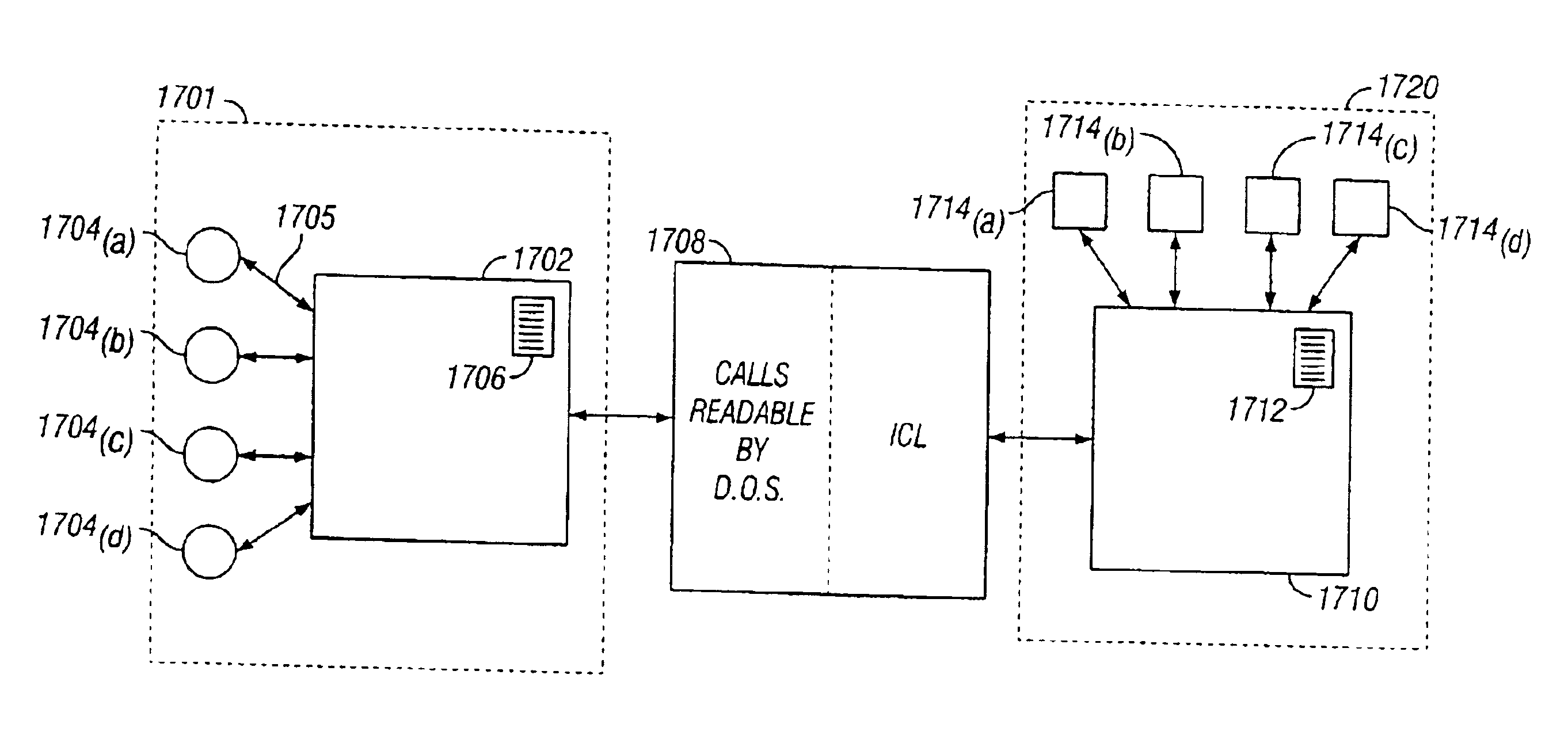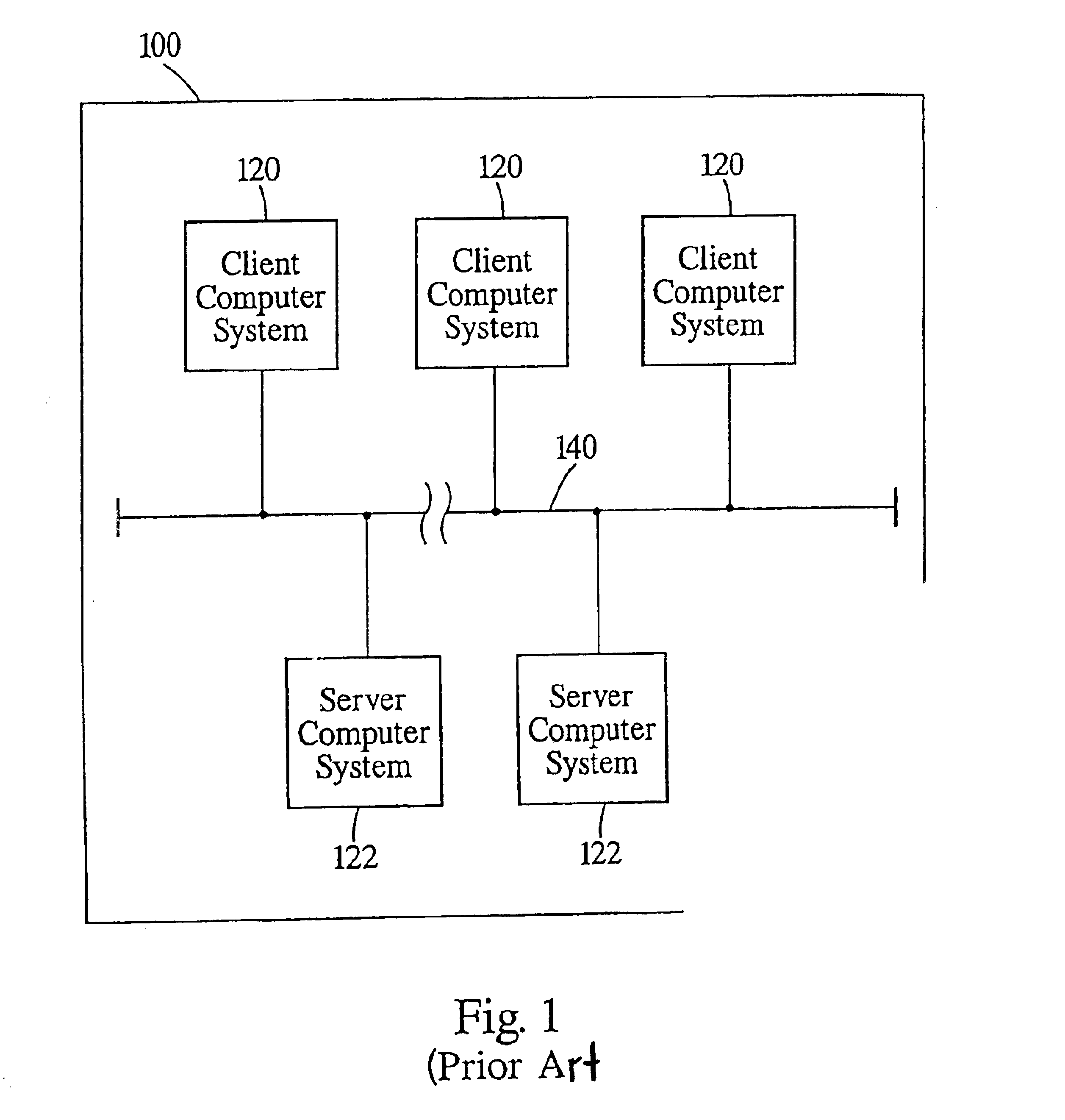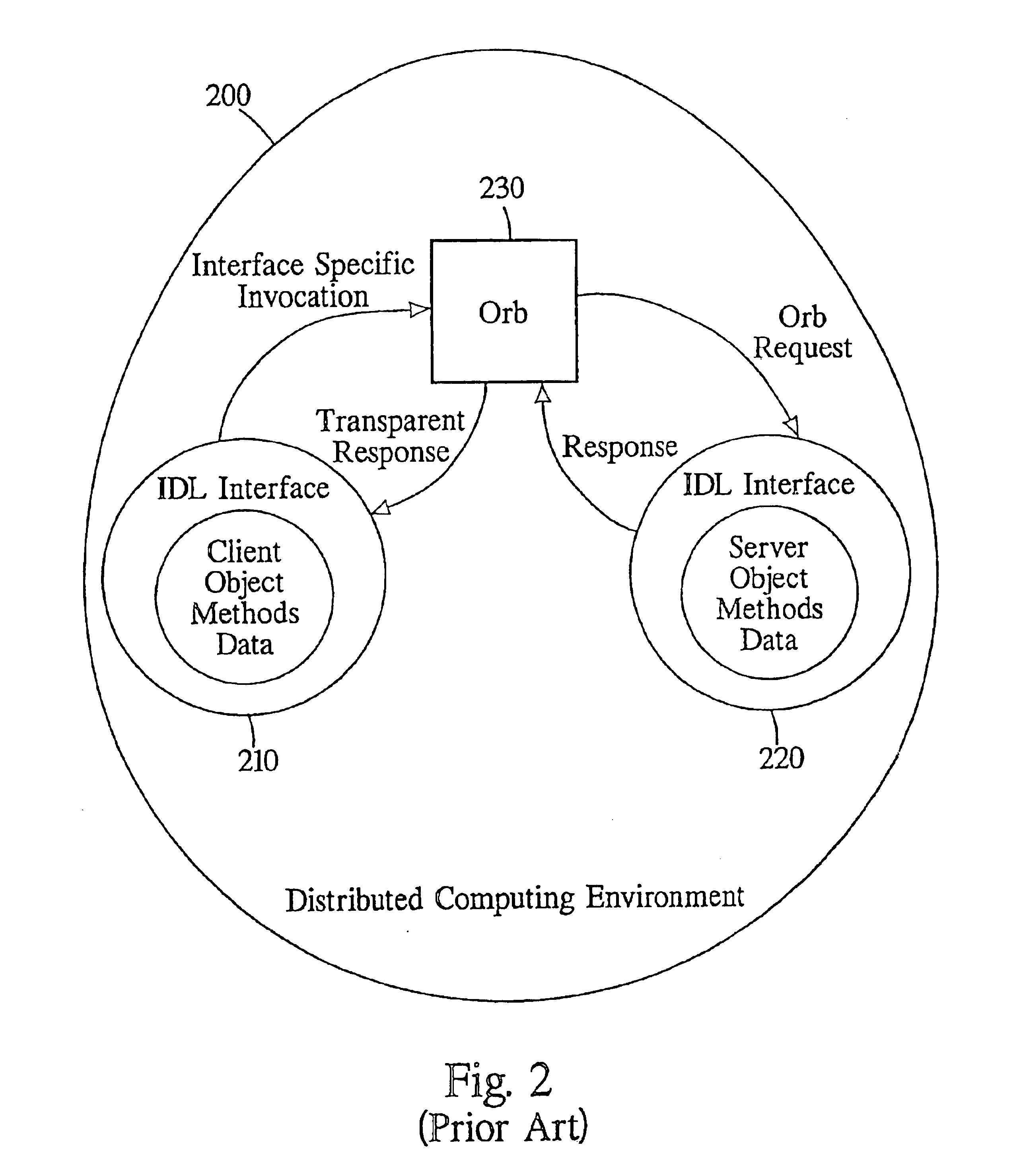Extensible software-based architecture for communication and cooperation within and between communities of distributed agents and distributed objects
a software-based architecture and distributed object technology, applied in the field of distributed computing environments, can solve the problems of doop approach, difficult to reuse an object in a new application, and certain aspects of the approach are not perfectly tailored to the constantly changing environment of the internet, and achieve the effects of enhancing scalability, reducing effort, and high flexibility
- Summary
- Abstract
- Description
- Claims
- Application Information
AI Technical Summary
Benefits of technology
Problems solved by technology
Method used
Image
Examples
Embodiment Construction
FIG. 3 illustrates a distributed agent system 300 in accordance with one embodiment of the present invention. The agent system 300 includes a facilitator agent 310 and a plurality of agents 320. The illustration of FIG. 3 provides a high level view of one simple system structure contemplated by the present invention. The facilitator agent 310 is in essence the “parent” facilitator for its “children” agents 320. The agents 320 forward service requests to the facilitator agent 310. The facilitator agent 310 interprets these requests, organizing a set of goals which are then delegated to appropriate agents for task completion.
The system 300 of FIG. 3 can be expanded upon and modified in a variety of ways consistent with the present invention. For example, the agent system 300 can be distributed across a computer network such as that illustrated in FIG. 1. The facilitator agent 310 may itself have its functionality distributed across several different computing platforms. The agents 320...
PUM
 Login to View More
Login to View More Abstract
Description
Claims
Application Information
 Login to View More
Login to View More - R&D
- Intellectual Property
- Life Sciences
- Materials
- Tech Scout
- Unparalleled Data Quality
- Higher Quality Content
- 60% Fewer Hallucinations
Browse by: Latest US Patents, China's latest patents, Technical Efficacy Thesaurus, Application Domain, Technology Topic, Popular Technical Reports.
© 2025 PatSnap. All rights reserved.Legal|Privacy policy|Modern Slavery Act Transparency Statement|Sitemap|About US| Contact US: help@patsnap.com



